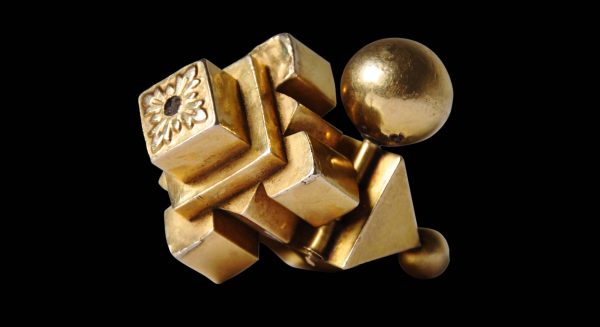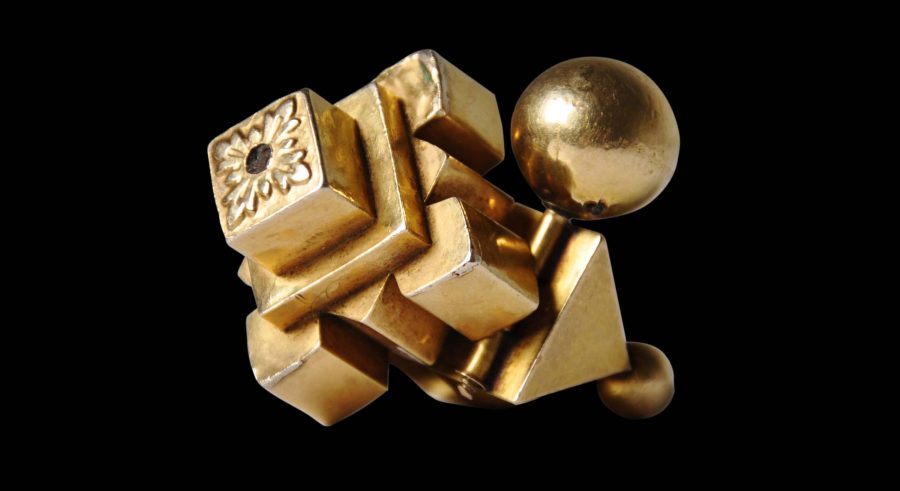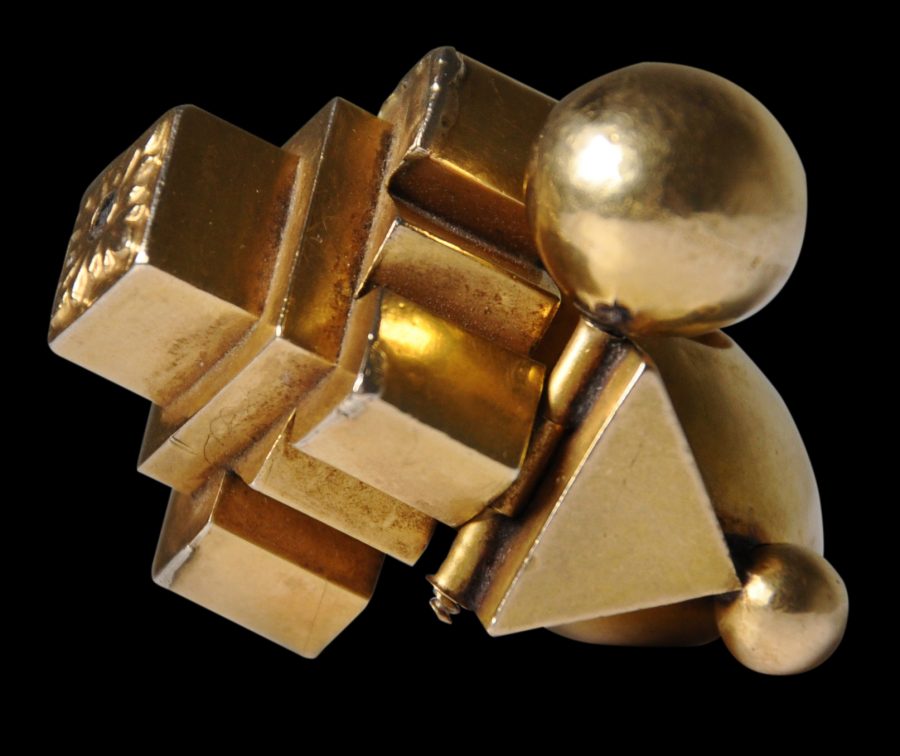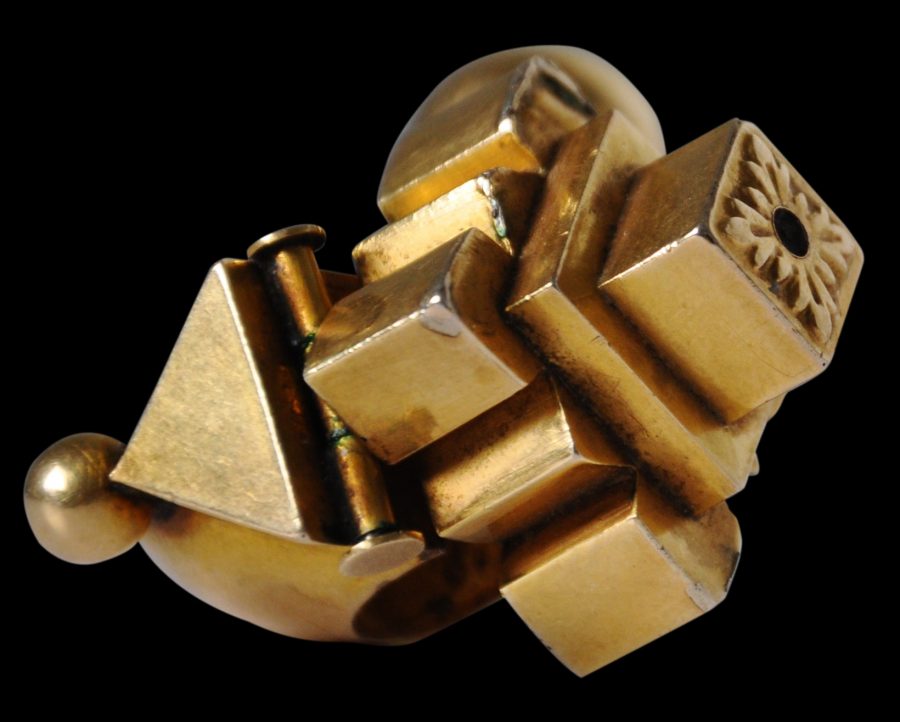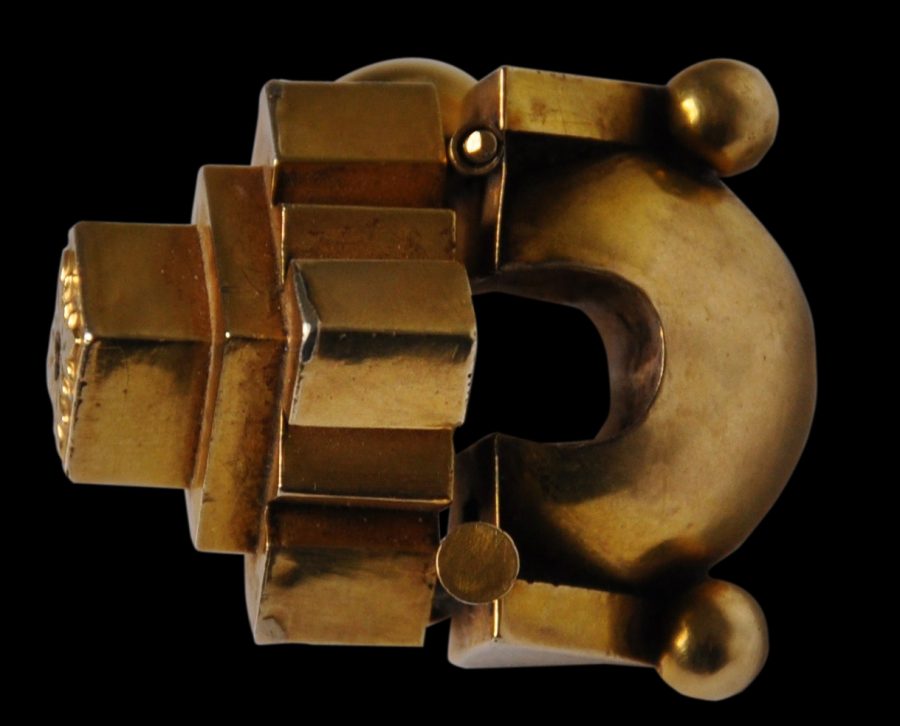This abstract ear ornament known as a thandatti is made of sheet gold filled with lac. It is large and impressive and designed to look heavy but in fact is relatively light to wear. The form comprises spheres, triangles and a squarish pyramidal structure which hangs down when worn. It is unusual because the top-most surface (or bottom-most depending on how the ornament is displayed) is chased with a leafy floral form.
The precise origins for the pyramidal form is not known but inspiration might be drawn form the elaborate and tall temple entrances or gopurams of Tamil Nadu. These, like the form here, seem based on the yantra, the magical, geometric diagram used in tantric Hinduism.
Worn in elongated earlobes, such ear pendants were worn by wealthy women members of the (lower) Velalar Nadar caste according to Bala Krishnan & Kumar (1999, p. 172), and by women of all castes other than the Brahmins, according to Ganguly (2007, p. 238).
Similar examples are illustrated in Ganguly (2007, p. 243), Geoffrey-Schneiter & Crick (2016, p. 90), and Untracht (1997, p. 221).
The example here is in a fine condition with ample signs of wear and use. There is minor crinkling to one of the planes of gold sheet, and the largest ball which covers the screw which allows the ornament to be opened for wear has a small hole to the gold sheet. But otherwise there are no losses and all is intact.

Agopuram at the Ekambaranathar Temple, Kanchipuram, Tamil Nadu
(photographed in December 2015).
References
Bala Krishnan, U.R., & M.S. Kumar, Dance of the Peacock: Jewellery Traditions of India, India Book House Ltd, 1999.
Bala Krishnan, U.R.et al, Icons in Gold: Jewelry of India from the Collection of the Musee Barbier-Mueller, Somogy, 2005.
Ganguly, W., Earrings: Ornamental Identity and Beauty in India, B.R. Publishing Corporation, 2007.
Geoffrey-Schneiter, B., & M. Crick, Bijoux D’Orients Lointains: Au Fil de L’Or au Fil de L’Eau, Foundation Baur, Musee des Artes D’Extreme-Orient/5 Continents, 2016.
Untracht, O., Traditional Jewelry of India, Thames & Hudson, 1997.


